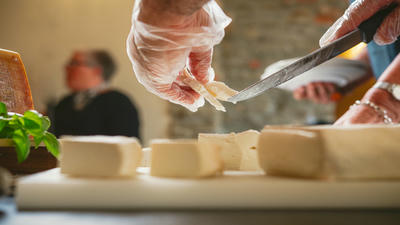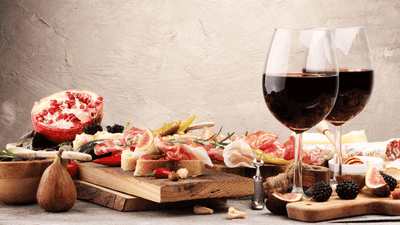
Cheese is one of the most beloved and versatile foods in the world, boasting a rich tapestry of flavors, textures, and aromas. Among the myriad of cheese varieties, artisanal cheeses stand out for their craftsmanship, unique characteristics, and the passion that goes into their production.
What is Artisanal Cheese?
Artisanal cheese refers to cheese produced in small batches by skilled cheesemakers who prioritize quality, flavor, and traditional methods over mass production. This type of cheese often highlights the unique qualities of the milk used, whether from cows, goats, or sheep, and is crafted with care and attention to detail. Artisanal cheesemakers typically focus on preserving local customs, heritage, and sustainable practices, making their cheeses an expression of the region and culture from which they originate.
The History of Artisanal Cheese
Cheese making can be traced back over 7,000 years to ancient civilizations in the Middle East and Europe. The techniques and styles of cheese production evolved, resulting in the diverse array of cheeses available today. In the past, cheesemaking was often a household activity, with families creating cheese to preserve excess milk and provide sustenance.
With the industrial revolution, cheese production shifted towards mass production, often sacrificing quality for quantity. However, the late 20th century saw a resurgence in interest in traditional artisan methods, as consumers sought more authentic, flavorful products. This movement gave rise to artisanal cheese as we know it today, with small-scale producers gaining recognition and appreciation for their craft.
The Art of Cheesemaking
The process of making artisanal cheese is both science and art. It generally involves several key steps, each of which can significantly influence the final product.
1. Sourcing Milk
The first step in cheese production is sourcing high-quality milk, as the type of milk used greatly affects the flavor and texture of the cheese. Cheesemakers often work with local dairy farms and select milk from specific breeds of cows, goats, or sheep. Factors such as the animal's diet, breed, and the season can have a profound impact on the characteristics of the milk, and accordingly, the cheese.
2. Curdling
The milk is heated and combined with rennet and/or bacterial cultures, which help to curdle the milk, separating the curds (solid) from the whey (liquid). This step is crucial, as the curd's composition will determine the cheese's texture and flavor.
3. Cutting and Cooking the Curd
Once the milk has curdled, the cheesemaker cuts the curds to help them release whey. The size of the curds is adjusted based on the desired type of cheese; smaller curds generally produce firmer cheeses. The curds are often gently cooked and stirred, which influences moisture content.
4. Draining and Pressing the Curd
The whey is drained off, and the curds are pressed to form a solid mass. The amount of pressure and length of pressing can vary significantly, depending on the type of cheese being made.
5. Salting
Salt is added to enhance flavor and act as a preservative. The salting method may involve mixing salt into the curds, brining the cheese, or applying salt directly to the surface.
6. Aging
Aging is a pivotal stage in cheese production, where the cheese develops its flavor, texture, and aroma. The aging process can take days, months, or even years, during which the cheese is monitored and cared for in controlled environments. Factors such as temperature, humidity, and the presence of mold can all influence the aging process.
7. Packaging and Selling
Once the cheese reaches its peak flavor and texture, it is packaged for sale. Many artisanal cheesemakers prioritize eco-friendly packaging and strive to connect with consumers through local markets or specialty cheese shops.

Exploring Artisanal Cheese Varieties
With thousands of artisanal cheeses produced around the world, each with its unique flavor profile and characteristics, the possibilities for exploration are virtually endless. Here are just a few notable categories and examples of artisanal cheeses from different regions.
Soft Cheeses
Soft cheeses are characterized by their creamy texture and milky flavor. They often have a short aging time and can be enjoyed spread on bread or paired with fruits.
-
Brie de Meaux (France): A rich, creamy cheese with a delicate earthy flavor. Brie de Meaux has a soft rind and is best enjoyed at room temperature with crusty bread.
-
Crottin de Chavignol (France): A goat's milk cheese with a slightly tangy flavor. Crottin de Chavignol is typically aged for a short period, gaining a nutty taste and sometimes a dusting of ash.
Semi-Hard Cheeses
Semi-hard cheeses are versatile and can be sliced, grated, or melted. They tend to offer a more robust flavor compared to soft cheeses.
-
Comté (France): Produced in the Jura region, Comté is known for its nutty, complex flavor that varies depending on the season. It is ideal for melting, making it perfect for fondue or croque monsieur.
-
Mahon (Spain): This cheese from the island of Menorca has a firm texture and a slightly tangy, buttery flavor. Mahon is often served with olives and crusty bread.
Hard Cheeses
Hard cheeses are aged for extended periods, resulting in intense flavors and a crumbly texture. They are commonly grated or shaved over dishes.
-
Parmigiano-Reggiano (Italy): Often referred to as the "King of Cheeses," Parmigiano-Reggiano is aged for a minimum of 12 months, creating its signature crystalline texture and rich, savory flavor. It pairs wonderfully with balsamic vinegar and fresh fruit.
-
Manchego (Spain): Made from sheep's milk, Manchego has a firm texture and a buttery, slightly nutty flavor. It can be enjoyed with quince paste and cured meats.
Blue Cheeses
Blue cheeses bring a unique, tangy flavor profile due to the presence of blue mold spores. They can be creamy or crumbly and are often enjoyed in salads or on cheese boards.
-
Roquefort (France): Famous for its blue veins and strong flavor, Roquefort is made from sheep's milk and is best paired with ripe pears and walnuts.
-
Gorgonzola (Italy): Gorgonzola is a creamy blue cheese that ranges in flavor from mild to sharp. It is an excellent addition to pasta dishes and risottos.
The Tasting Experience
When exploring artisanal cheeses, the experience can be enriched by understanding how to taste and appreciate the diverse flavors. Here are some tips for enhancing your cheese tasting journey:
1. Prepare Your Palate
To fully appreciate the flavors of artisanal cheese, start with a clean palate. Avoid heavy meals or strong flavored foods prior to tasting. Drinking water between samples can also cleanse your palate.
2. Assess the Appearance
Begin by examining the cheese’s appearance. Pay attention to the color, texture, and any visible mold on the surface. A cheese's appearance often gives you insight into its flavor profile and aging process.
3. Smell the Cheese
Before tasting, take a moment to inhale the aroma of the cheese. The nose plays a vital role in flavor perception, and the scent can provide hints of what to expect in taste.
4. Take a Small Bite
Cut or break a small piece of cheese and place it on your tongue. Allow it to soften and coat your palate while you chew gently. Notice the flavors that develop as the cheese melts in your mouth.
5. Consider Pairings
Artisanal cheeses are often best enjoyed with accompaniments that enhance their flavors. Consider pairing cheeses with:
- Breads: Crusty breads, baguettes, and crackers offer a neutral base for the cheese.
- Fruits: Fresh or dried fruits, such as apples, grapes, figs, or apricots, add a touch of sweetness.
- Nuts: Walnuts, almonds, or pistachios provide crunch and complexity.
- Condiments: Honey, jams, or preserves can add sweetness, while mustard can provide a tangy contrast.
Cheese and Wine Pairing
Cheese and wine pairing is an art in itself that can elevate your tasting experience. Here are a few classic cheese and wine pairing suggestions:
- Brie de Meaux with Chardonnay: The creaminess of the cheese complements the buttery notes of a rich Chardonnay.
- Aged Gouda with Cabernet Sauvignon: The nutty flavor of Gouda pairs beautifully with the boldness of Cabernet Sauvignon.
- Roquefort with Sauternes: The sweetness of Sauternes balances the strong flavor of Roquefort, creating a harmonious pairing.
- Parmigiano-Reggiano with Chianti: The savory notes of the cheese enhance the fruitiness of Chianti, making for a delightful combination.
Hosting a Cheese Tasting
Hosting a cheese tasting can be a memorable and enjoyable gathering for friends and family. Here are tips to host a successful cheese tasting event:
1. Select a Theme
Choose a theme for your tasting, such as regional cheeses (e.g., French, Italian, Spanish), types of milk (cow, goat, sheep), or specific styles (soft, hard, blue). This adds structure and excitement to the event.
2. Curate Your Cheese Selection
Select 4-6 different cheeses, ensuring a variety of textures and flavors. Consider including both well-known cheeses and lesser-known artisanal finds for a balanced experience.
3. Prepare Accompaniments
Gather suitable accompaniments like assorted breads, fruits, nuts, and condiments. Include a selection of wines or craft beers that complement the cheeses.
4. Create a Tasting Platter
Arrange the cheeses on a wooden board or platter, labeling each cheese with its name and origin. This adds an element of sophistication and encourages discussion.
5. Provide Tasting Notes
Supply guests with tasting notes or sheets to jot down their impressions and favorite pairings. This can help them remember the cheeses they enjoyed most and encourage conversation.
Conclusion
The world of artisanal cheeses offers an endless journey of flavors, textures, and aromas. From the hands of dedicated cheesemakers to our tables, these unique cheeses represent local traditions, sustainable practices, and culinary artistry. By exploring different varieties, savoring the tasting experience, and experimenting with pairings, you can elevate your appreciation for artisanal cheese. Whether hosting a cheese tasting event or enjoying cheese on your own, every bite is an opportunity to connect with the rich cultures that celebrate this art form. So gather your favorite cheeses, invite friends, and embark on your own delicious tasting journey.



